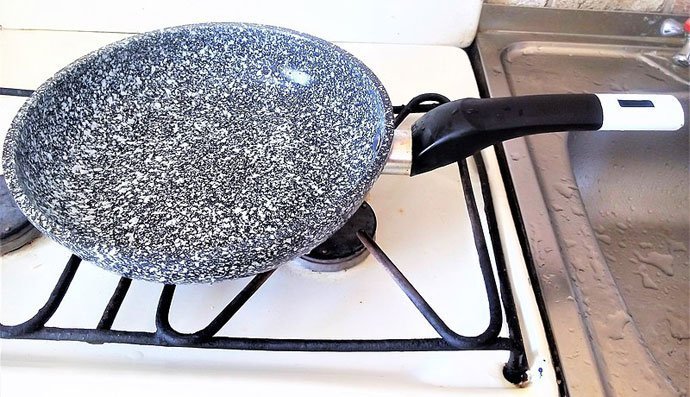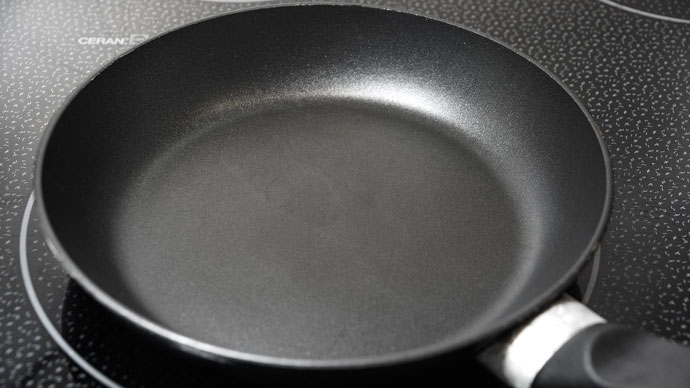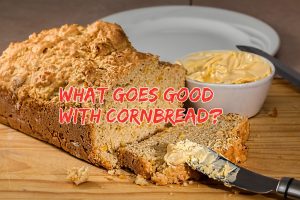Choosing a frying pan is depends on your cooking method, budget, and your stovetop. Different types of cooking pans have different features. Some of them are suitable for high heat while some are not. This is more confusing when you have so many options to buy. If you are looking for a frying pan but confused to choose, I am here to help you out.
There is a list of different types of frying pans that are available in the market. From this post, you can also get lots of information about the materials of these pans.
Different Types of Frying Pans
There is a discussion about various types of pans and their materials in detail. Check it out to get more details.
Check: What Size Fry Pan Should I Buy?
Stainless Steels Frying Pan
Many people like to use stainless steel frying pans because of their low maintenance requirements. Stainless steel fry pan doesn’t react to acidic food, you can cook almost all kind of meals with it. Food-grade stainless steel is one of the best frying pan material as there is no health issue with them. Stainless steel with copper or aluminum core at the bottom also makes them perfect for quick and even heating.
However, people often complained about stainless steel pans that they tend to stick and hence, hard to clean. Actually, this is not right, if you know the right way you can clean your stainless steel pan easily with some household products.
Pros
[su_list icon=”icon: thumbs-o-up” icon_color=”#008000″]
- Most durable.
- Resistant to rust and corrosion
- Non-reactive and also non-porous.
- Can be used after years.
- Safe for the oven as well as broiler and induction cooktop. [/su_list]
Cons
[su_list icon=”icon: thumbs-o-down” icon_color=”#EE3322″]
- Poor heat conductivity.
- Difficult to clean stuck-on food.
- Can be expensive especially when it comes with a copper core. [/su_list]
We Recommend: Made in Stainless Steel Frying Pan
Cast Iron Skillet/Frying Pan
The cast iron pan is best known for its great heat retention capabilities. That means a cast iron pan can get hot and stays hot after removing it from the burner. Normally, food that needs high heat will do well in a cast iron pan. As cast iron is not a good heat conductor you will need to preheat properly. However, the cast iron pan can react to certain acidic foods like tomatoes. Moreover, a cast iron pan needs proper seasoning to prevent foods from sticking. Overall, they are the best option for those who are looking for a heavy bottom skillet.
Pros
[su_list icon=”icon: thumbs-o-up” icon_color=”#008000″]
- Durable, won’t chip or wrap easily.
- Less expensive.
- Stable to use with metal utensils.
- Naturally non-stick, if you can season it properly.
- Enamelled cast iron pan is easy to clean. [/su_list]
Cons
[su_list icon=”icon: thumbs-o-down” icon_color=”#EE3322″]
- Not an excellent heat conductor.
- Enamelled cast iron pan is expensive.
- Heavy to handle. [/su_list]
We Recommend: Lodge Cast Iron Skillet
Non-Stick Frying Pan
A non-stick frying pan is considered to be the ideal option for healthy cooking. Because its non-stick cooking surface allows cooking with less fat. It reduces excess oil or fat from the food and prevents food from sticking on the surface of the pan. In short, non-stick cookware is the best option for food that requires only low to medium heat for cooking. And there are different types of non stick pans are available but Teflon coated non-stick pans are common. Moreover, they are perfect as flat frying pan but the non-stick coating surface will wear off over time.
Pros
[su_list icon=”icon: thumbs-o-up” icon_color=”#008000″]
- Conduct heat evenly and rapidly.
- Easy cleaning process.
- Ideal for healthy cooking.
- Release food easily.
- Non-reactive and also environment-friendly. [/su_list]
Cons
[su_list icon=”icon: thumbs-o-down” icon_color=”#EE3322″]
- Comes with a short lifespan.
- Not suitable for metal utensils. You can use only wooden or plastic utensils with your non-stick frying pan.
- Not safe for the dishwasher.
- Cook only medium to low heat. [/su_list]
We Recommend: T-fal Ultimate Hard Anodized 2-Piece Fry Pan
Stoneware Frying Pan
Clay and stoneware pans are the oldest type of pans that are still used today. They also require proper seasoning like cast iron pans before using them. They are available in various attractive colors, sizes, and shapes. The majority of stoneware available on the market are glazed baking dishes and casseroles, intended for oven use only. Other more specialty pieces of stoneware like bread pans, pizza stones, and tagine pot are also available in the market.
Pros
[su_list icon=”icon: thumbs-o-up” icon_color=”#008000″]
- Safe for the freezer as well as the dishwasher.
- Durable and practical.
- Heats quickly and holds heat without burning.
- Stable for use in the microwave. [/su_list]
Cons
[su_list icon=”icon: thumbs-o-down” icon_color=”#EE3322″]
- Avoid putting hot stoneware pan into cold water otherwise, it could even destroy.
- Cheaper stoneware pan can contain lead. [/su_list]
We Recommend: GRANITE STONE Nonstick Frypan
Copper Frying Pan
Copper is not only the best heat conductor but also attractive, durable and free from harmful chemicals. It heats evenly and cools down quickly. That means, no need to pre-heat your copper pan before starting your cook. However, copper is very reactive and can add a metallic taste or yellowish tint to many foods. For this reason, many copper pans are lined with stainless steel for its interior and exterior.
Pros
[su_list icon=”icon: thumbs-o-up” icon_color=”#008000″]
- Among all the cookware material, copper is the best heat conductor.
- Copper pan doesn’t need preheating.
- Can be used on the oven as well as gas and electric cooktops.
- Comes with an attractive appearance. [/su_list]
Cons
[su_list icon=”icon: thumbs-o-down” icon_color=”#EE3322″]
- Not safe for the induction cooktop.
- Very expensive compared to other metal pans.
- Will tarnish over time because of air and water exposure.
- Not dishwasher safe. [/su_list]
We Recommend: MICHELANGELO 10 Inch Copper Frying Pan
Aluminium or Hard Anodized Aluminium Frying Pan
An aluminium frying pan is lightweight, sturdy, durable and great as a heat conductor. Raw aluminium is reactive material so that it must be sorted out in certain ways before it’s used as cookware. The hard anodization process makes the cookware stronger and non-reactive. It is safe for the oven and also for gas and electric cooktops. However, different types of aluminium frying pans need different maintenance and care. Some are dishwasher safe and some are not, it would be better to read the manual description before using it.
Pros
[su_list icon=”icon: thumbs-o-up” icon_color=”#008000″]
- Sturdy and lightweight.
- Inexpensive and affordable.
- Resistant to high heat temperature.
- Great heat conductivity. [/su_list]
Cons
[su_list icon=”icon: thumbs-o-down” icon_color=”#EE3322″]
- Not induction safe.
- Could leach metallic taste to food if scratched or damaged.
- Not a good option for sweet baked items. [/su_list]
We Recommend: All-Clad Hard Anodized Nonstick Fry Pan
Ceramic Frying Pan
Ceramic non-stick frying pan is generally very attractive. This type of pan is non-reactive, so that is ideal for cooking acidic and alkaline foods. Ceramic non-stick coating is made from natural ingredients, it doesn’t provide any harmful chemical. Furthermore, it is environment-friendly so it is the safest option to cook healthy meals. Moreover, you can store your leftover food in the fridge with this cookware. It is safe for the oven as well as the dishwasher. That’s why Ceramic is considered one of the best types of frying pan for everyday use.
Pros
[su_list icon=”icon: thumbs-o-up” icon_color=”#008000″]
- Free from harmful chemical like PTFE or POTA.
- Has ultra-smooth non-stick surface.
- Non-react with acidic food.
- Comes in various attractive colours and designs. [/su_list]
Cons
[su_list icon=”icon: thumbs-o-down” icon_color=”#EE3322″]
- Cannot withstand at high heat temperature.
- Can crack or break easily more than other metal cookware.
- Comes with a short lifetime.
- Expensive more than other metallic pans. [/su_list]
We Recommend: GreenLife Soft Grip Healthy Ceramic Nonstick Pan
Glass Pans
The glass is an amazing heat conductor. It makes a great addition to any kitchen. Glass is non-reactive to foods and ideal for baking items. Glass pans are safe for the oven, but you cannot use them on the induction cooktop. These kitchen frying pans are dishwasher safe and very easy to clean. However, never put a hot glass pan into cold water, or cracking can occur.
Pros
[su_list icon=”icon: thumbs-o-up” icon_color=”#008000″]
- Less expensive than the ceramic pan.
- Safe for the oven as well as dishwasher cleaning.
- Spreads heat evenly and rapidly.
- Non-reactive and non-porous, doesn’t provide any metallic taste into food. [/su_list]
Cons
[su_list icon=”icon: thumbs-o-down” icon_color=”#EE3322″]
- Not compatible to use on the broiler.
- Need to be cool completely before washing.
- Requires extra care and attention during cleaning and storing. [/su_list]
We Recommend: Pyrex Corning Visions Cookware Amber 7″ Skillet
Other Types of Pans (Not Only for Frying)
- Grill Pan/Griddle
A grill pan or griddle is mainly made of cast iron and mostly used for grilling. This type of pan comes with a series of parallel ridges. They are perfect for both meat and vegetable grilling and popular for outdoor cooking in the UK, USA and Ireland.
- Carbon Steel Pan
The carbon steel pan is similar to the cast iron skillet but they are not heavy as cast iron. Carbon steel is lightweight than cast iron and its nonstick properties are almost similar to cast iron. A well-seasoned carbon steel pan is perfect for cooking anything from egg to meat.
- Roasting Pan
A roasting pan is mainly used in the oven for cooking meat and vegetables at high temperatures. This type of pan is deeper and comes with a high sidewall as well most of them also come with an extra rack. However, carbon steel or stainless steel is mainly used as roasting pan raw material.
- Saucepan
The saucepan can be made of stainless steel, aluminum, ceramic or other metal that is perfect for cooking more food or liquid than a regular pan. This type of pans come with high sides, a long handle and a lid. They are mostly round in shape.
- Casserole Pan
A Casserole Pan is similar to an enameled Dutch Oven but they are not deeper as Dutch Oven. This pan is mainly made of enameled cast iron material but also can be made out of ceramic, steel or glass. This pan is compatible with both the stovetop and oven. And they are best for slow-cooking recipes.
- Crepe Pan
Crepe pan can be made out of cast iron, steel, aluminum and they are used for making Crepes or pancakes. They are very similar to a regular egg pan or frying pan but comes with a low or flat edge. This pan available with both nonstick coating and without nonstick coating.
- Egg Pan or Omelet Pan
Egg pan or omelet pan is specially designed for making omelets or cooking eggs. They are like a frying pan but smaller in size and mostly made of aluminum, steel or ceramic with nonstick coating.
- Paella Pan
This is a wide and shallower cooking vessel that is mainly used for cooking Paella a Spanish Dish made with rice, meat or seafood. Cast iron and carbon steel mainly used for making Paella pan.
- Sauté Pan
This type of pan comes with a straight side, a handle and a lid. Mainly used for searing meat and can be made out of steel or stainless steel. But nowadays, Saute Pan also made out of various materials like aluminum, ceramic and coated with nonstick coating.
- Tagine or Tajine
Tagine or Tajine is the same thing that is one kind of earthenware pot. They are mostly used for North African and Moroccan cuisine. They are comfortable with both stovetop and oven cooking.
- Wok Pan
Available in both round and flat bottom and mostly used for Asian cuisine. Most of the wok pan is mainly made of carbon steel and they are enough nonstick for cooking different types of recipes. Different types of metal and stainless steel wok also available in the market.
Final Words
As you can see from the above post, each form of the pan has its advantages and disadvantages. Which one you’ll buy it totally depends on the type of foods that you usually cook. However, all the information for Different Types of Frying Pans will help you to choose your needed one. Buying any type of pan for your kitchen is obviously a great investment. So, you should know everything in detail about the pan before purchasing it. It will save both your money and time from wasting.
Useful Resources for Further Reading








